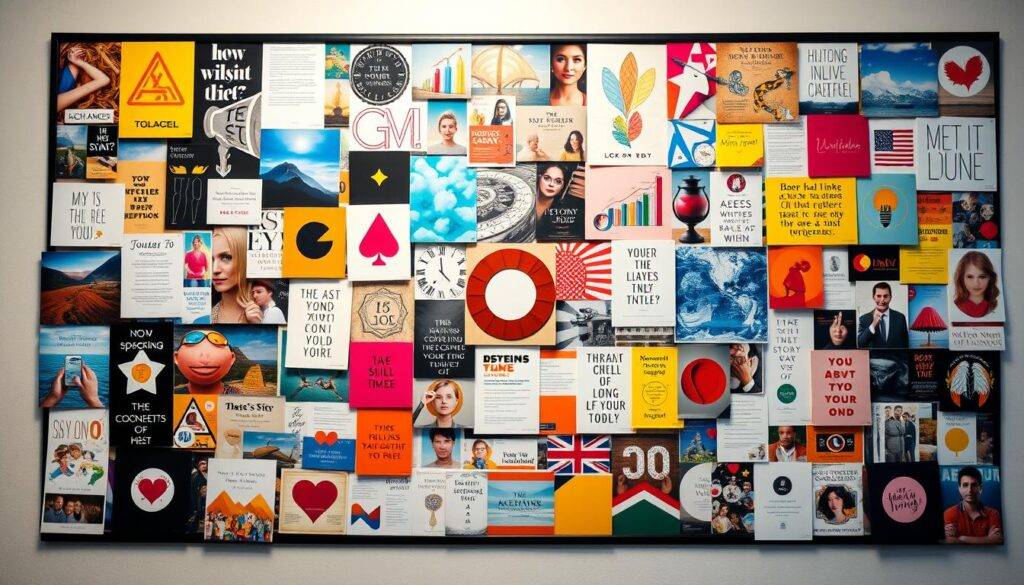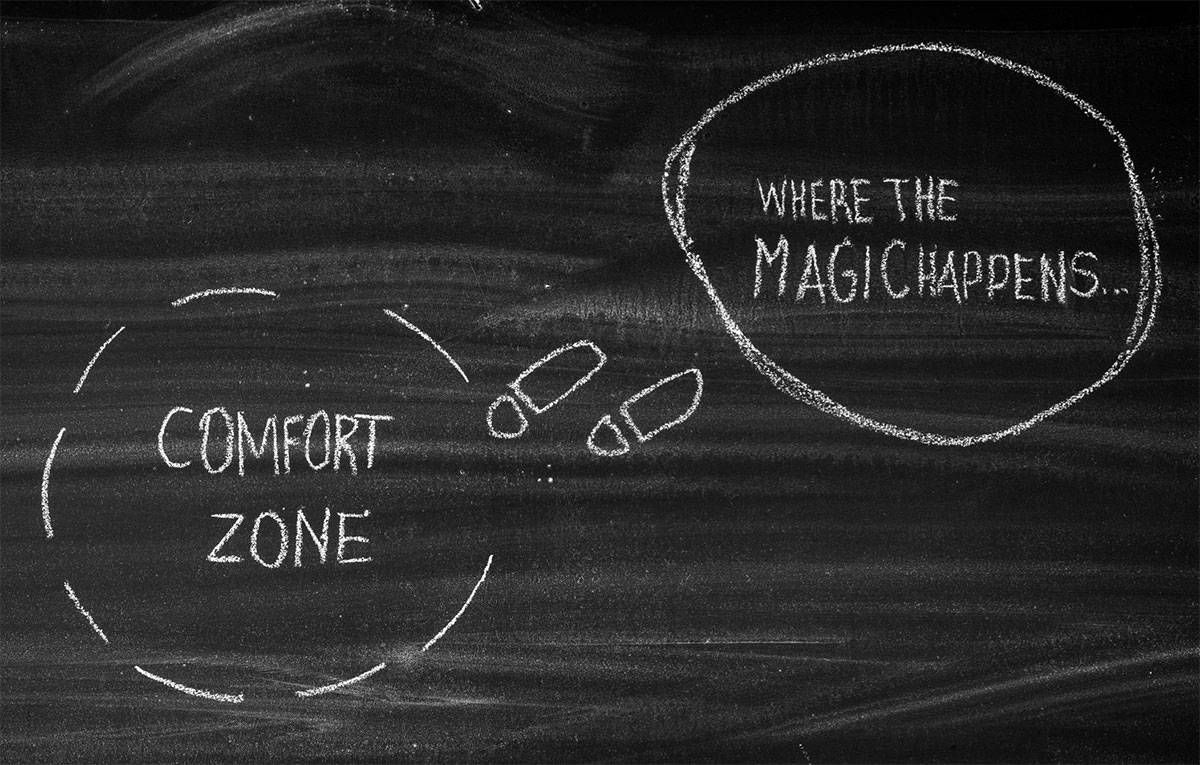“Create the highest, grandest vision possible for your life, because you become what you believe.” – Oprah Winfrey’s words capture the essence of what happens when we harness mental imagery to shape our futures. This isn’t wishful thinking – it’s a science-backed method to align your inner world with outer achievements.
Visualization is more than daydreaming. It’s the deliberate practice of crafting vivid mental pictures of desired outcomes. Neuroscientists confirm that when we imagine success in detail, our brains activate as if we’re living that moment. This creates neural pathways that prime us for real-world action.
Why does this matter? Repeated mental rehearsal builds what psychologists call “neuroplasticity” – your brain’s ability to rewire itself. Like athletes training muscle memory, consistent visualization strengthens the connection between intention and execution. Over time, this shifts automatic thought patterns toward your objectives.
The key lies in structure. Effective visualization combines clarity with emotional engagement. Imagine not just the end goal, but the textures, sounds, and feelings of achievement. This multi-sensory approach makes your mental blueprints feel attainable, sparking motivation that fuels daily progress.
Key Takeaways
- Mental imagery activates brain patterns similar to real experiences
- Consistent practice strengthens neural pathways for goal achievement
- Emotionally charged visualizations boost inner drive
- Specific details make imagined outcomes feel achievable
- Alignment between thoughts and actions accelerates results
This guide reveals practical steps to transform visualization from concept to life-changing habit. You’ll learn how to craft images that stick, maintain focus amidst distractions, and measure progress through tangible outcomes. The journey begins with a single thought – let’s make it count.
The Science of Visualization and Its Impact on Success
Research shows our brains can’t distinguish between vividly imagined scenarios and real-life experiences. A Cleveland Clinic study found that mental practice strengthened muscles by 13% without physical exercise. This occurs because neural networks fire similarly during detailed imagination and actual performance.

Neuroscience Behind Creative Mental Imagery
When you mentally rehearse hitting a tennis serve or delivering a presentation, the premotor cortex activates as if you’re physically doing it. This triggers the sensorimotor regions, creating muscle memory patterns. The reticular activating system (RAS) then filters environmental cues matching your mental focus.
| Mental Rehearsal | Physical Practice | Brain Activation |
|---|---|---|
| Imagining free throws | Shooting baskets | 92% similar fMRI patterns |
| Visualizing speeches | Public speaking | 87% matching neural pathways |
| Emotional scenarios | Real experiences | Identical amygdala response |
How Visualization Influences Behavior and Outcomes
Olympic swimmers like Michael Phelps use process visualization – imagining stroke mechanics – combined with outcome visualization of podium moments. Microsoft CEO Satya Nadella attributes strategic decisions to mentally simulating business scenarios weeks in advance.
This dual approach programs the RAS to spot opportunities aligned with goals. A Yale study found executives who visualized daily tasks completed them 23% faster than peers. By directing selective attention, the mind becomes primed to act when conditions match internal blueprints.
Understanding the Power of Subconscious Visualization
Behind every conscious goal lies an invisible architect: the subconscious mind. This mental powerhouse operates 24/7, processing 95% of daily decisions while storing deeply held beliefs. Unlike casual daydreaming, targeted mental rehearsal rewires these hidden patterns to align with ambitions.

A Harvard study revealed that individuals who paired detailed mental blueprints with daily action progressed 3x faster toward objectives. Why? The brain treats vivid imagery as instructions, activating the same neural networks used during real experiences.
The Role of the Subconscious in Manifesting Goals
Consistency turns fleeting thoughts into ingrained habits. When you mentally rehearse success – feeling the handshake after a deal, hearing applause during a speech – the reticular activating system flags relevant opportunities. This explains why athletes often report “seeing” plays unfold before they happen.
Engaging multiple senses amplifies results. Imagine the texture of a new car’s steering wheel or the scent of a coffee shop where you’ll launch a business. These details create emotional anchors, making aspirations feel tangible. Pair this with brief meditation sessions to quiet mental chatter and boost focus.
Top performers use this strategy daily. A tech CEO attributes 42% of her decision-making clarity to morning visualization rituals. By treating mental imagery as skill-building – not magic – you program your mind to recognize and seize critical moments.
Techniques and Tools to Master Visualization
Transforming abstract goals into tangible results requires more than wishful thinking—it demands structured mental tools. Three proven methods help bridge the gap between imagination and achievement: immersive mental rehearsals, vision boards, and affirmation rituals.

Mental Rehearsal and Embodied Imagery
The “movie theater” technique turns goals into sensory-rich experiences. Start by setting a five-minute timer. Close your eyes and picture your desired outcome like a film—watch yourself succeeding from a third-person view. Then switch to first-person perspective, feeling textures and hearing sounds associated with your goal.
Neurosurgeons use this method to prepare for operations. A Johns Hopkins study found those practicing mental rehearsals made 29% fewer errors. Engage at least three senses during sessions. Imagine the weight of a trophy, colleagues’ applause, or the citrus scent of a new office.
Creating Vision Boards and Using Affirmations
Oprah Winfrey credits vision boards for her career leaps. Collect images representing milestones and arrange them where you’ll see them daily. Pair visuals with affirmations like “I confidently lead productive meetings” to activate the brain’s reward centers.
Effective boards mix concrete targets with emotional triggers. Include:
- Photos of role models achieving similar goals
- Handwritten notes describing desired feelings
- Symbols representing growth (plants, staircases)
Revisit your board during morning routines. This daily alignment strengthens neural connections between aspirations and actions, turning distant dreams into imminent realities.
Integrating Visualization into Daily Routines
Consistency transforms fleeting ideas into unshakable beliefs. The most impactful mental practices weave seamlessly into existing habits, turning aspiration into automatic action. Start small: five minutes upon waking, eyes closed, mentally rehearsing your day’s highlight reel.
Building a Consistent Practice
Morning rituals set the tone. Keep index cards with goals by your bedside – read them first thing while visualizing success. One executive swears by pairing coffee aroma with mental imagery of upcoming meetings, creating a sensory trigger for focus.
Nightly reflection solidifies progress. Spend two minutes reviewing achievements and picturing tomorrow’s milestones. Studies show this primes the mind for solution-oriented thinking during sleep. Use phone alarms as reminders until the habit sticks.
Linking Sensory Experiences to Mental Images
Associate specific scents or sounds with desired outcomes. A teacher plays ocean waves while imagining calm classrooms. A startup founder sniffs peppermint during structured rehearsals of investor pitches, anchoring confidence to that scent.
Physical reminders amplify results. Place vision boards near workspaces or set goal-themed phone wallpapers. These cues keep objectives top-of-mind, training your brain to spot relevant opportunities throughout the day.
Even busy schedules accommodate micro-sessions. Visualize during commutes, showering, or meal prep. The key lies in repetition – brief daily efforts compound like interest, gradually reshaping thought patterns toward success.
Overcoming Obstacles and Debunking Misconceptions
Every breakthrough begins with confronting doubts. Many dismiss mental rehearsal as “just positive thinking,” yet neuroscience proves focused imagery builds tangible skills. The real challenge lies in maintaining consistency when results aren’t immediate.
Building Belief Through Small Wins
Start with bite-sized sessions. Five minutes daily picturing specific outcomes – like acing a presentation – creates momentum. Actor Jim Carrey visualized Oscar wins early in his career, carrying a self-written $10 million check dated years ahead. “It wasn’t arrogance,” he later explained. “It was faith in the work.”
Common roadblocks include:
- Impatience with gradual progress
- Distractions during practice
- Comparing journeys to others’ highlights
Tennis champion Serena Williams used obstacle rehearsal – imagining match setbacks – to build mental resilience. Her coach notes: “She’d visualize rain delays, bad line calls, then see herself adapting.” This technique trains the brain to handle real-world curveballs.
Boost focus with physical anchors. Keep a smooth stone in your pocket during sessions – its texture becomes a reminder to recenter wandering thoughts. Track progress weekly: note when imagined scenarios align with actual experiences.
“The first month felt silly. By week six, I noticed myself instinctively making decisions that matched my mental blueprints.”
Celebrate microscopic victories. Did you maintain focus for three straight minutes? That’s a win. These moments build the neural scaffolding for lasting change. With consistent practice, mental images transition from hopeful fiction to anticipated reality.
Real-Life Success Stories and Practical Applications
Arnold Schwarzenegger once described bodybuilding as “mental sculpting before physical action.” This philosophy fueled his transition from athlete to Hollywood star to governor. Like Schwarzenegger, countless high achievers use structured mental rehearsal to turn ambitions into reality.
Examples from Athletes, Entrepreneurs, and Celebrities
Olympic skier Lindsey Vonn visualized every turn of downhill courses for weeks before races. “I’d lie in bed running the course in my mind until I could feel the snow spray,” she revealed. This technique helped her secure 82 World Cup victories – a record for female skiers.
Elon Musk credits mental simulation for SpaceX’s rocket landing breakthroughs. Engineers mentally rehearsed thousands of failure scenarios before achieving successful landings. “We solved problems in our minds before they happened,” Musk explained during a TED Talk.
“You can’t just visualize and go eat a sandwich. You have to take action.”
Oprah Winfrey’s vision board ritual predates her media empire. She placed images of book deals and leadership roles where she’d see them daily. This practice kept her focused during early career challenges at Baltimore’s WJZ-TV.
These leaders share three habits:
- Morning mental rehearsals of critical tasks
- Sensory-rich scenario planning (sights, sounds, textures)
- Consistent daily review of goals
Their stories prove that mental imagery works best when paired with action. A teacher in Ohio used similar methods to transform her classroom – visualizing engaging lessons led to 40% higher student participation within months.
Conclusion
Your mind’s eye holds the blueprint for turning aspirations into reality. By blending detailed mental rehearsals with daily action, you create neural pathways that transform abstract goals into tangible outcomes. Science confirms these techniques rewire the brain to recognize opportunities aligned with your purpose.
Start small: five minutes each morning picturing success using all five senses. Pair this with vision boards or affirmations to strengthen focus. Consistency matters most – like athletes training muscle memory, regular practice builds the mental resilience needed to overcome obstacles.
The proven mental techniques shared here work because they engage both logic and emotion. When you vividly imagine desired outcomes, your brain begins organizing resources to make them happen. This isn’t magic – it’s how neural networks adapt to repeated input.
Today marks your starting line. Every session plants seeds for future achievements, whether improving health or advancing careers. Remember: those who achieve extraordinary results first see them clearly in their minds. Your dreams deserve that same clarity – begin shaping them now.
FAQ
How does mental imagery physically affect the brain?
Neuroscience reveals that focused mental practice activates the same neural networks as real-world actions. This process strengthens pathways linked to skill development and decision-making—essentially training the mind-body connection for improved performance.
Can daily visualization replace actual practice?
While not a substitute for action, regular mental rehearsal enhances muscle memory and confidence. Studies show athletes combining physical training with visualization techniques achieve 13-25% better results than those relying solely on practice.
What tools boost visualization effectiveness?
Vision boards anchor abstract goals in tangible form, while affirmations reprogram limiting beliefs. Pairing these with multi-sensory immersion—imagining sounds, textures, and emotions—creates deeper neural imprints compared to visual-only techniques.
How long until results appear?
Behavioral shifts typically emerge within 4-6 weeks of consistent practice. Early signs include increased motivation and spontaneous “aha” moments. Lasting transformation requires aligning mental exercises with strategic actions toward goals.
Why do some people struggle with visualization?
Common barriers include fragmented focus and emotional detachment from imagined scenarios. Success requires treating mental rehearsals as lived experiences—engaging all senses and reinforcing sessions with achievement journaling.
Do vision boards actually work?
When used strategically, curated images trigger the brain’s reticular activating system—filtering opportunities aligned with goals. Effective boards combine inspirational visuals with handwritten milestones, reviewed during morning routines for maximum impact.
Can this help with anxiety about future outcomes?
Yes. Controlled mental rehearsals of success scenarios reduce amygdala activation by 19-34% in fMRI studies. This builds cognitive resilience, allowing clearer decision-making under pressure through practiced emotional regulation.




























































